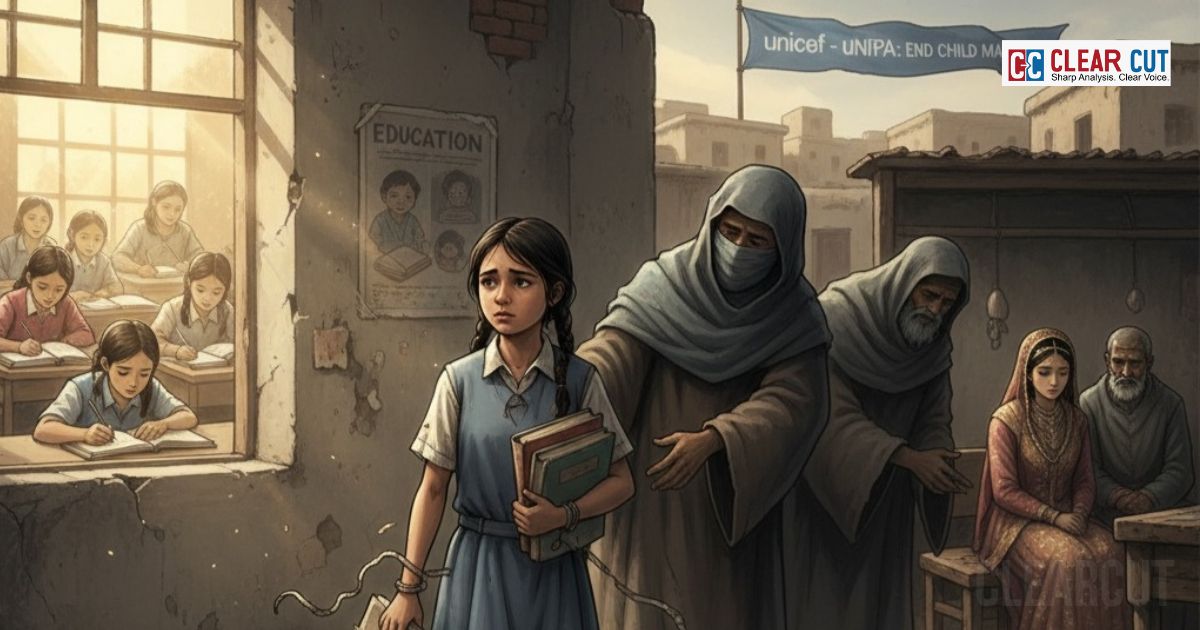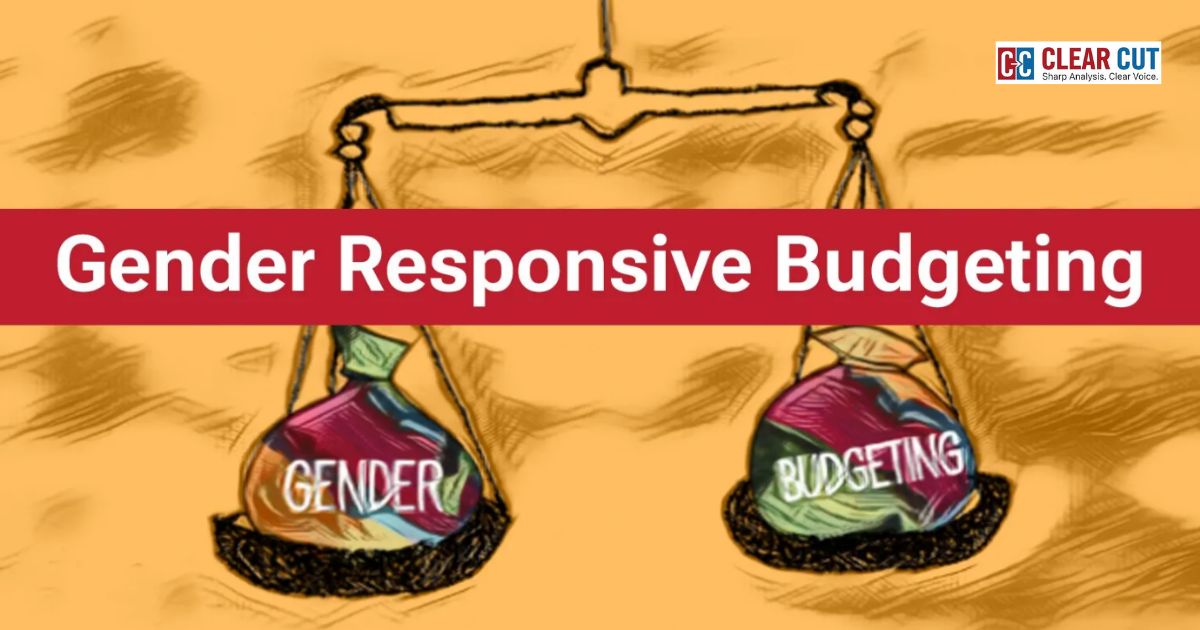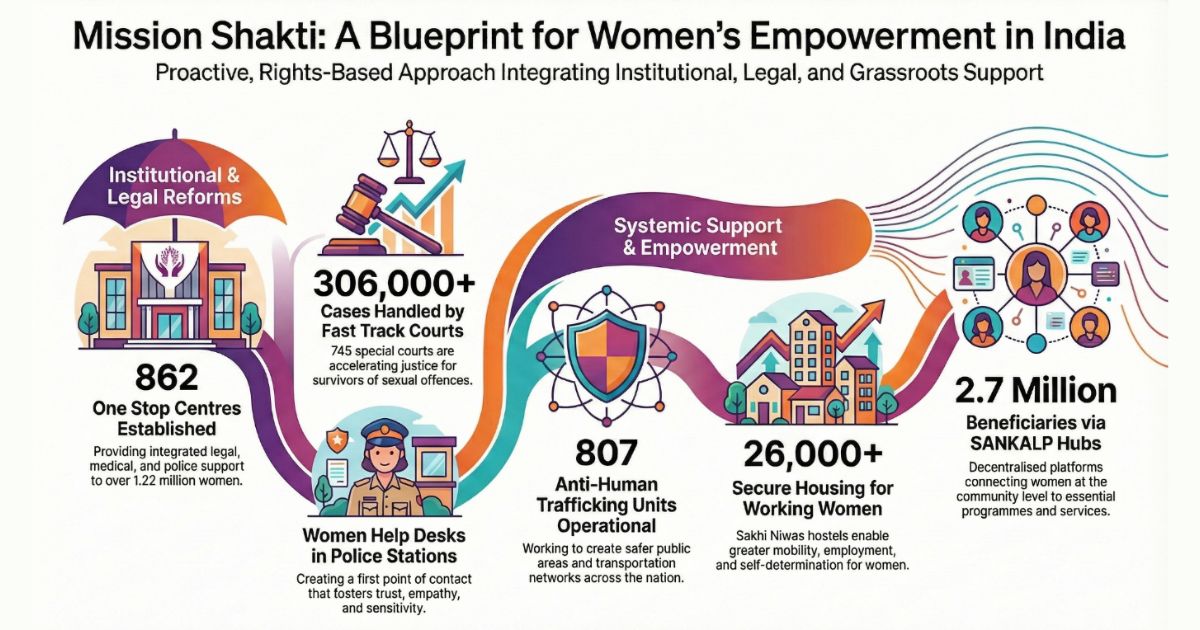Photo Credit: Antara Mrinal
Clear Cut Gender Desk
New Delhi, UPDATED: Oct 13, 2025 05:32 IST
Written By: Antara Mrinal
Across the planet, a quiet emergency is taking root. UNICEF estimates that 12 million girls marry every year before they turn 18. Progress is being made, but global momentum towards ending child marriage is slowing down as a result of conflict, climate shocks and economic shocks – putting decades of progress ending child marriage at stake.
According to UNICEF, the prevalence of child marriage globally has gone from one-in-four girls (as of a decade ago) to one-in-five (and counting!). At least 650 million women and girls living today were married as children – which is staggering. Further, whilst South Asia once was the global centre of child marriage, and has seen significant declines in child marriage due to strong policy action and community action mobilization, now sub-Saharan Africa and South Asia carry almost half of the global burden with poverty and crises leading families to marry their girls as a poverty strategy.
It will take an increase in the rate of decline (10-fold) every year of its current, to embrace UN Sustainable Development Goal (SDG) 5.3 to eliminate child marriage by 2030. Without any additional action, until 2030 UNICEF estimates another 110 million girls will be child brides.
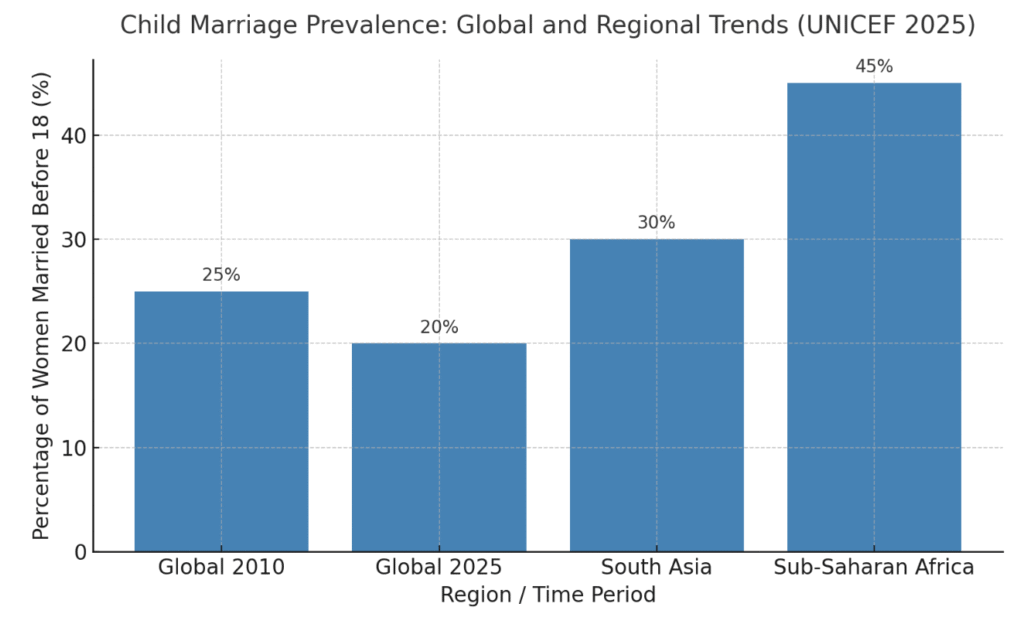
The Indian Statistics of Child Marriage
India has achieved great progress in the past 15 years by reducing child marriage even though the country continues to be home to nearly one-third of the world’s child brides. An estimated 223 million women are alive today that were married as children. Data from CRY and DevInsights conducted in four states in India, suggest that child marriage is the result of poverty, underserved gender norms, lack of schooling, and socialization to support early marriage in some contexts.
The CRY/DevInsights survey from 2021 for Child Brides shows that :
- Nearly all child brides were married between the ages of 15–17, indicating that child marriages primarily occurred during middle adolescence.
- The respondents’ age distribution (child brides) was consistent across all four states.
- The spouses’ age distribution showed greater variation among states.
- Only a small proportion of grooms were aged 15–17 at the time of marriage.
- The majority of spouses were adults, mainly between 18–21 years or above 21 years.
- There exists a notable age gap between brides and their spouses in most regions.
- The data underscores gender disparity in child marriage patterns, with brides typically much younger than their grooms.
But, according to CRY/DevInsights’ survey for Child Groom, the gendered nature of child marriages is quiet clearly visible :
- Most child grooms were aged 18–21 years, especially in Maharashtra (80%) and Andhra Pradesh (81%).
- Very few grooms were married below the age of 15, indicating that child marriage among boys generally occurred in late adolescence or early adulthood.
- The majority of brides married to these child grooms were aged 15–17 years, showing a consistent pattern across states.
- Odisha reported the highest proportion (93%) of brides in the 15–17 age group.
- There exists a clear age gap between child grooms and their spouses, with brides typically being younger.
The Triple Threat: Conflict, Climate, and COVID-19
UNICEF is issuing the warning that capacity for improving conditions for children is at risk due to converging crises. Armed conflict and displacement heighten vulnerability for families and lead to the relinquishing of daughters as a protection measure or financial relief as an endemic response. In areas of the Horn of Africa impacted by drought, or areas of South Asia impacted by floods, climate shocks add additional stresses and circumstances into families’ lives, further eroding livelihoods for families and forcing difficult decisions.
COVID-19 adds yet another layer of devastation, as it disrupts schools and communities. UNICEF and UNFPA estimate that critical disruption from COVID-19 has the potential situation to result in an additional 10 million child marriages by 2030. UNICEF notes that this “perfect storm” may consume decades of cultivated intervention towards stopping child marriage on a global scale.
The Gendered Reality
The fundamental issue of child marriage is gender inequity. Social norms related to education, independence and potential disproportionately impact girls in this reality. For example, globally, a candidate for child marriage is six times more likely to be a girl than a boy. In some cases, marriage is a way to control a girl’s sexuality, or a way to preserve family honor. The expense of such control is high. Girls who marry early experience a higher risk of domestic violence, school dropout, and younger age of pregnancy, sometimes at the cost of their lives.
Pregnancy and childbirth complications are the leading cause of death for girls aged 15-19 (WHO, 2024). This cycle continues when her children are born into poverty, have limited opportunity, and continue feeding the cycle of systemic inequity.
UNICEF’s Global Programme: Building Agency and Shifting Norms
In 2016 UNICEF and UNFPA launched the Global Programme to End Child Marriage, which has been implemented in over a dozen high-prevalence countries. The programme work occurs at two levels, at which (i) the empowerment of adolescent girls; and (ii) community norms about the environments in which they inhabit.
To date, over 21 million adolescent girls have received life-skills and health education, and back to school support. In addition, more than 353 million people (including men, and boys, faith leaders and policy makers) were engaged in activities related to community dialogues and public messaging and advocacy work about challenging the norms that uphold early marriage.
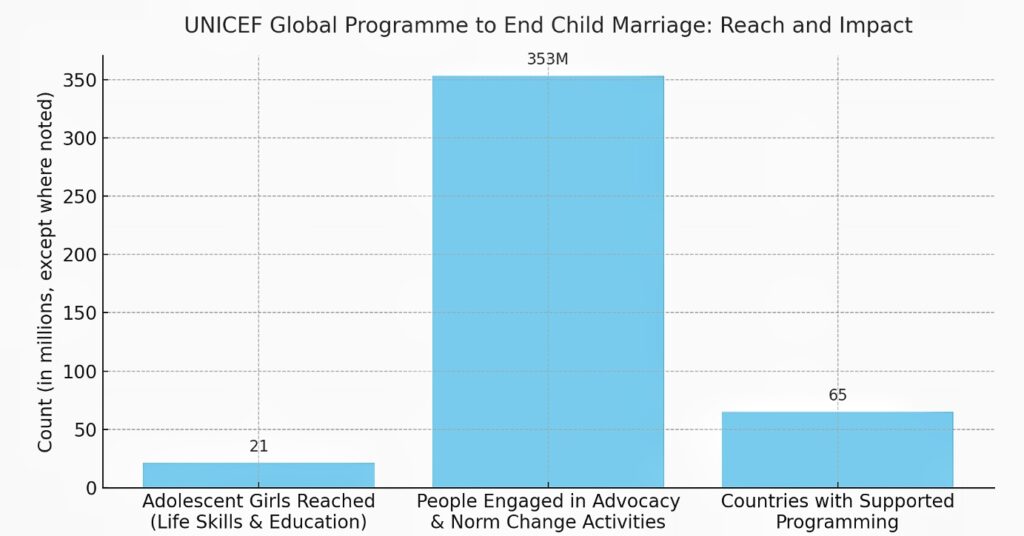
The work is informed by data. UNICEF with its Multiple Indicator Cluster Surveys (MICS) and Global Databases has been measuring the national progress and the evidence has been utilized to help support programming and funding for programming in around 65 countries. In addition to national governments, legislation was strengthened, social protections increased and young people’s access to sexual and reproductive health, and education improved.
Resilience in Crisis
“Battling the Perfect Storm,” a technical note from UNICEF, illustrates how programming has responded to global crises. Mobile learning hubs in refugee camps have helped to keep girls in school. In fragile economies, cash transfer programs have provided families with options to avoid early marriage. Over the past year, there has been an increasing use of digital platforms and community radio to raise awareness in distant or conflict-affected areas.
Nevertheless, there remains a large funding gap. The United Nations Population Fund (UNFPA) estimates that investments to fully implement interventions to end child marriage in 68 high burden countries will require $35 billion by 2030. Current funding dedication to early marriage interventions is less than a third of that.
Laws Are Not Enough
Although 95% of countries do have laws that set the minimum age of marriage at 18 or higher, enforcement too often remains a challenge. Laws need supportive education, economic opportunities, and social supports. In countries with gender-adaptive policies to end child marriage alongside a supportive community like Ethiopia and Nepal, there has been a decrease in child marriage. In fragile contexts, these laws WITHOUT supports to individual families will likely not change the core of ingrained cultural norms and the instincts of families under the pressure of survival under economic strain and displacement.
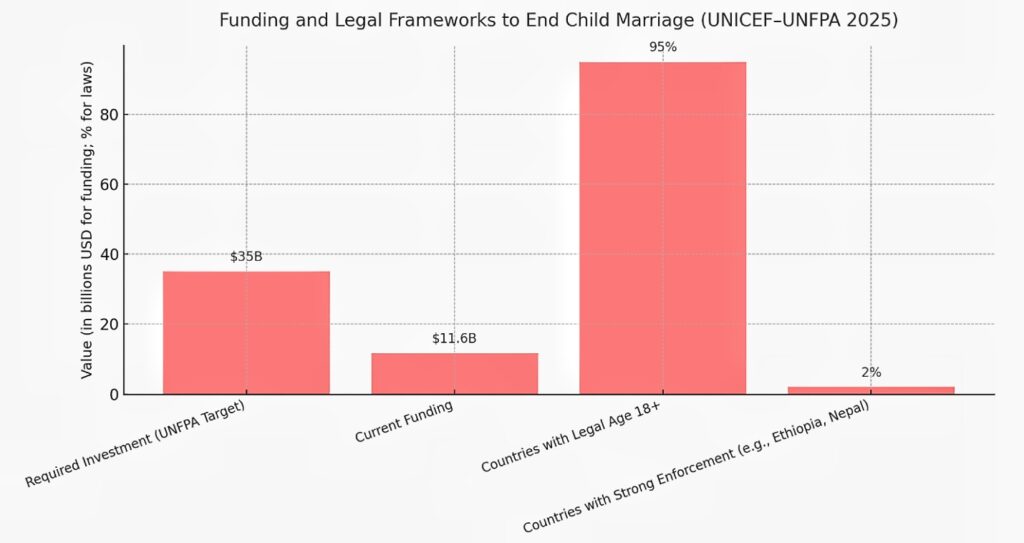
A Future Worth Fighting For
Putting an end to child marriage is not only a moral imperative but a pragmatic one. The World Bank indicates that child marriage costs developing countries trillions of dollars per year, lost due to diminished educational and economic gains. Education of girls, delaying marriage and access to healthcare might all be termed as sustainable development’s best options for a return on investment.
UNICEF and the UN repeatedly call for a cross-sectoral integrated approach here – an approach that marries gender equality with education, health, climate, resilience, and humanitarian work. Global platforms such as “Generation Equality” or “Every Woman Every Child” increase calls for immediate action: without providing proper protection for adolescent girls today, there will be no equitable progress tomorrow.
Child marriage is a cause and a symptom of inequity. Ending child marriage will need more than a new law or awareness raising – it will require an attitudinal shift in how societies value girls’ potential futures. UNICEF’s messaging is key, and with shared responsibility; ending child marriage in one generation can be a reality. Letting that urgency for action lapse, and millions more will have their chance to choose their future taken away from them.
With inputs from:
- UNICEF Global Database (2025)
- UNFPA-UNICEF Global Programme to End Child Marriage
- WHO (2024)
- World Bank (2023)
- CRY / DevInsights (2021) “Child Marriage in India: A Research Study”
- National Family Health Survey (NFHS-5, 2019–21)


